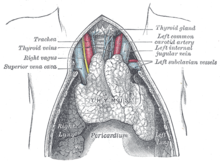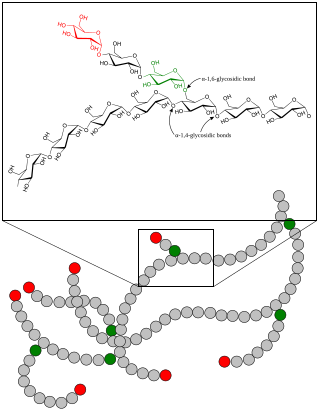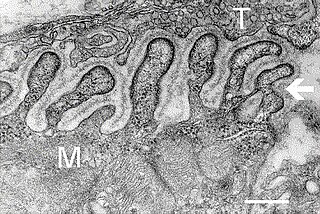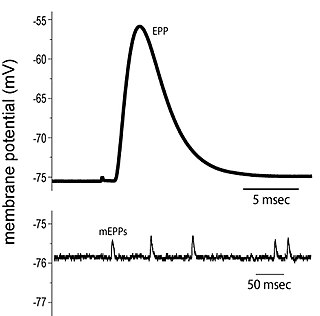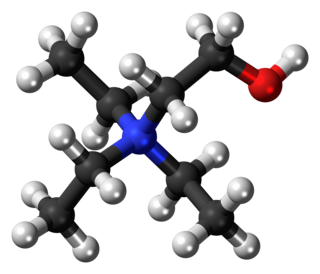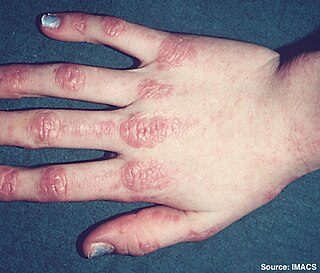| Myasthenia gravis | |
|---|---|
 | |
| Eye deviation and a drooping eyelid in a person with myasthenia gravis trying to open her eyes | |
| Specialty | Neurology |
| Symptoms | Varying degrees muscle weakness, double vision, drooping eyelids, trouble talking, trouble walking [1] |
| Usual onset | Women under 40, men over 60 [1] |
| Duration | Long term [1] |
| Causes | Autoimmune disease [1] |
| Diagnostic method | Blood tests for specific antibodies, edrophonium test, nerve conduction studies [1] |
| Differential diagnosis | Guillain–Barré syndrome, botulism, organophosphate poisoning, brainstem stroke, [2] metabolic myopathies |
| Treatment | Medications, surgical removal of the thymus, plasmapheresis [1] |
| Medication | Acetylcholinesterase inhibitors (neostigmine, pyridostigmine), immunosuppressants [1] |
| Frequency | 50 to 200 per million [3] [4] |
Myasthenia gravis (MG) is a long-term neuromuscular junction disease that leads to varying degrees of skeletal muscle weakness. [1] The most commonly affected muscles are those of the eyes, face, and swallowing. [1] [5] It can result in double vision, drooping eyelids, and difficulties in talking and walking. [1] Onset can be sudden. [1] Those affected often have a large thymus or develop a thymoma. [1]
Contents
- Signs and symptoms
- Eyes
- Eating
- Speaking
- Head and neck
- Other
- Pathophysiology
- In pregnancy
- Diagnosis
- Classification
- Physical examination
- Blood tests
- Electrodiagnostics
- Ice test
- Edrophonium test
- Imaging
- Pulmonary function test
- Differential diagnoses
- Management
- Medication
- Plasmapheresis and IVIG
- Surgery
- Physical measures
- Medical imaging
- Prognosis
- Epidemiology
- History
- Research
- References
- Further reading
Myasthenia gravis is an autoimmune disease of the neuromuscular junction which results from antibodies that block or destroy nicotinic acetylcholine receptors (AChR) at the junction between the nerve and muscle. [6] [7] [1] This prevents nerve impulses from triggering muscle contractions. [1] Most cases are due to immunoglobulin G1 (IgG1) and IgG3 antibodies that attack AChR in the postsynaptic membrane, causing complement-mediated damage and muscle weakness. [8] Rarely, an inherited genetic defect in the neuromuscular junction results in a similar condition known as congenital myasthenia. [9] [10] Babies of mothers with myasthenia may have symptoms during their first few months of life, known as neonatal myasthenia. [1] Diagnosis can be supported by blood tests for specific antibodies, the edrophonium test, electromyography (EMG), or a nerve conduction study. [1]
MG is generally treated with medications known as acetylcholinesterase inhibitors, such as neostigmine and pyridostigmine. [1] Immunosuppressants, such as prednisone or azathioprine, may also be used. [1] The surgical removal of the thymus may improve symptoms in certain cases. [1] Plasmapheresis and high-dose intravenous immunoglobulin may be used during sudden flares of the condition. [1] If the breathing muscles become significantly weak, mechanical ventilation may be required. [1] Once intubated acetylcholinesterase inhibitors may be temporarily held to reduce airway secretions. [11]
MG affects 50 to 200 people per million. [3] [4] It is newly diagnosed in 3 to 30 people per million each year. [12] Diagnosis has become more common due to increased awareness. [12] MG most commonly occurs in women under the age of 40 and in men over the age of 60. [1] [5] [13] It is uncommon in children. [1] With treatment, most live to an average life expectancy. [1] The word is from the Greek mys, "muscle" and astheneia "weakness", and the Latin gravis, "serious". [14]

